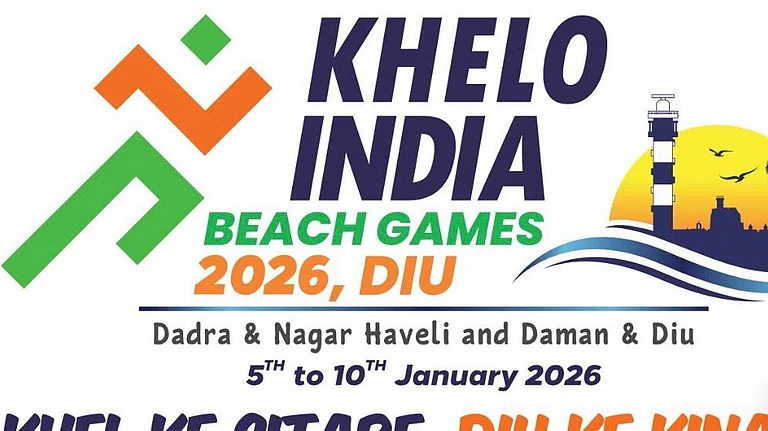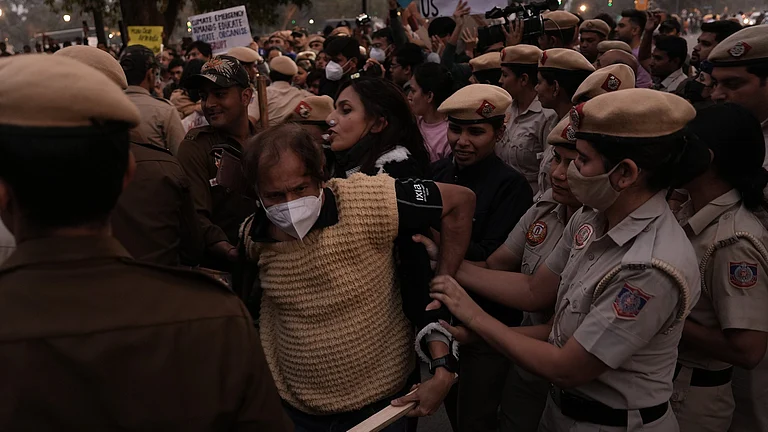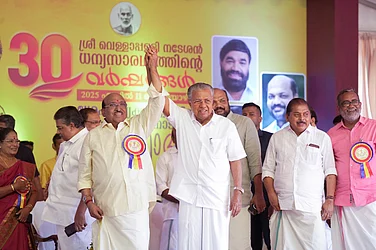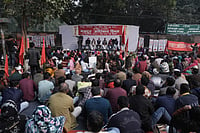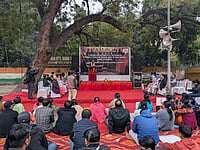
Delhi’s JJ colony residents spend up to 15 per cent of their income on bottled water due to unreliable supply and broken sanitation
Many homes lack proper toilets and drainage, forcing women to use nearby fields, while collapsing roofs and damp walls pose safety risks
Greenpeace India’s audit highlights the urgent need for functioning water ATMs, tankers, and long-term infrastructure to ensure safe access
Water, a fundamental human right, remains out of reach for billions. Often marginalised groups bear the brunt and face discrimination, while the privileged can afford to fill their pots. One must ask: Is this truly about scarcity, or does money decide access? Governments must adopt a human rights-based approach (HRBA) to water and sanitation, ensuring no one is left behind.
According to the United Nations, around four billion people face severe water scarcity at least one month a year, while over two billion still lack access to safe drinking water.
Nowhere is this injustice clearer than in Delhi’s informal settlements, where water is not just scarce, it is expensive. A recent Greenpeace India Water Access Audit (August 2025), based on a survey of 500 households across 12 bastis, shows how families are paying a heavy price for something that should be freely and fairly available to all.
The costs are crushing. With monthly incomes usually between Rs 6,000 and Rs 10,000, many families reported spending Rs 500 to Rs 1,500 on water each month, up to 15 per cent of what they earn. That trade-off is visible everywhere: 70 per cent said water expenses eat into their grocery budgets, while others admitted skipping healthcare or compromising on children’s education. Long hours spent waiting in queues add another layer of loss; nearly 40 per cent said they had missed work or arrived late because of it.

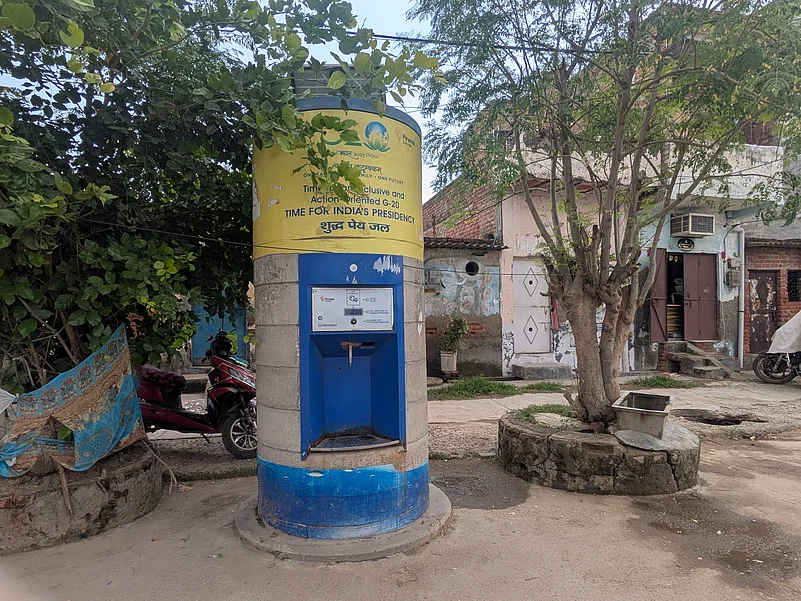
Greenpeace’s report urges the government to act fast: install at least 5,000 working ATMs, repair old pyaus, ensure tankers arrive on time, and build long-term infrastructure.
Until then, Delhi’s most vulnerable will keep paying the highest price for every drop.
Vaishali Upadhyay, a Climate and Energy Campaigner at Greenpeace India, commented that while water tankers and water ATMs may provide temporary relief during heatwaves, they are not a permanent solution.
According to Upadhyay, these facilities often face problems of maintenance and functionality, especially in informal settlements, and people end up paying drivers or buying water at high costs in places like Lohar Basti and Sangam Vihar.
Outlook visited Savda Ghevra, a JJ colony on the Delhi-Haryana border and one of the 12 informal settlements surveyed in the report.
What do the residents say?
Shakuntala (60) has been living in the Savda Ghevra since 2006, after her JJ cluster in Mahipalpur was demolished and residents were shifted. A widow for the past four years, she has no children and lives alone in her 18-square-foot house. She receives support under the Delhi Widow Pension Scheme, which provides Rs 2,500 a month to widowed, divorced, separated, or abandoned women to offer basic financial security.

“Now that my husband has passed away, I struggle all alone. I get Rs 2,500 per month, that’s it. I buy water cans every 2-3 days because I don’t require much, but that amount also eats up Rs 200 of my pension. Can you expect someone to live like this, in times where even vegetables amount to buying gold for the poor?”
Shakuntala further complained that access to clean drinking water is not the only issue; the sewage system of the colony, which she says is almost broken, has nallah water entering their homes.
“Mosquitoes are breeding in this water, with almost every deadly disease present, and it’s the same in everyone’s house. We don’t get clean water to drink, we don’t get a clean place to live, where is a poor person supposed to go? I voted for the BJP with hopes that we would be treated well. These politicians literally beg for votes during elections, and now that they have won, it’s all game over for us.”
For most respondents, the search for drinking water is a daily struggle. About a third rely on private suppliers, often at inflated rates; another third queue up at tankers, never sure when or if they will arrive. Around one in five depend on water ATMs, but these machines, meant to be the government’s solution, are unreliable. Of the 3,000 promised under the Heat Action Plan, Greenpeace found only about 20 in public spaces across the city. In the settlements surveyed, just four had functioning ATMs, and even those often broke down, failed to provide the free 20 litres per household, or stopped working during power cuts.

Residents allege how government officials fine them for not cleaning their drums or coolers, but ignore the broken sewage system.
Oma Devi, another resident, echoes the same pain. “I have been living here for sixteen years. In all this time, not once have we had clean water. The water from the tap is so dirty, full of mud, that we cannot drink it. Poor people like us cannot afford an RO, so we either buy water or strain it through a cloth. Half of our income goes just on buying water, and still, we are never sure it is safe. If even drinking water is not easy to access, then tell me, how can life in this colony ever improve?” she asks.
Perhaps most stark is the sense of disparity. While middle-class and elite colonies have regular access to a piped supply and use purifying machines, the capital’s poorest are left to fend for themselves, cobbling together litres from whatever source they can find.
Women in the colony said that most families do not have washrooms inside their homes and have to go to nearby fields, which brings them distress and danger.
Santosh (50), who has also been living in the colony since 2006, says, “Our girls and women my age go to the fields to relieve themselves, because the community toilets are now nothing but ruins. The issue is not just about drinking water. So many issues have piled up that now we are facing a monster. From the city, we were thrown here in the name of safe housing. What kind of safety is this?”

Santosh further told that last year her grandson suffered life-threatening injuries when the roof of their washroom collapsed on him. The walls had been weakened by moisture and dampness due to the water that enters their homes during the monsoons, making the structure unsafe.
“I still tremble when I remember the sight of my grandson buried under the debris. He was only four years old, and saving him cost us a huge amount of money that we had to borrow from others. My husband earns barely anything, and my son’s salary is only Rs 12,000 per month. For a poor family like ours, it broke us completely.”
Laxminarayan, the Pradhan of the colony, explained that when the people moved here in 2006, there was nothing, no electricity, no water, no drainage, just jungle, and they had to manage everything themselves.
He said, “The piped supply comes sometimes, sometimes not, and there’s no proper drainage, so water collects everywhere. Mosquitoes are everywhere, and people can’t sleep at night. The community toilets are blocked and broken, so women have to go into the jungle. There’s water standing everywhere, and it’s dangerous; many times, women have faced problems while going there.”
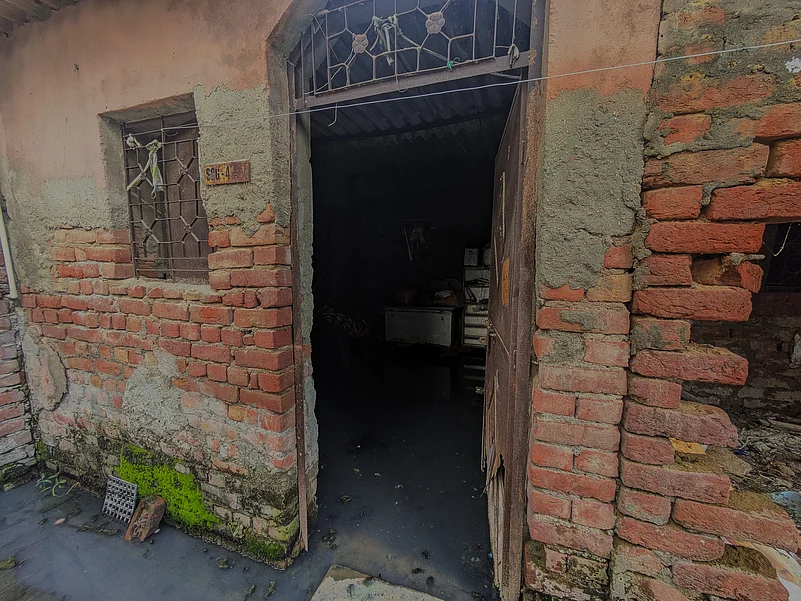
He added that people are falling sick because of dirty water, and some families have to buy canned water, which costs Rs 20–30 a can. “For poor families, it’s very hard to manage every month,” he said.
He also mentioned that they keep complaining to the MCD for drainage and toilet repairs and stressed,“We want the work done quickly, especially before the monsoon, so people don’t suffer.”

Water scarcity is rising fast in India and around the world. Millions of people still don’t have reliable access to clean drinking water, and infrastructure in many areas isn’t keeping up with the demand. Low-income families often spend a large part of their income just to get enough water. Reports like the Greenpeace India Water Access Audit show how serious the problem has become.
The question is: will governments step in and fix it before it gets worse?








